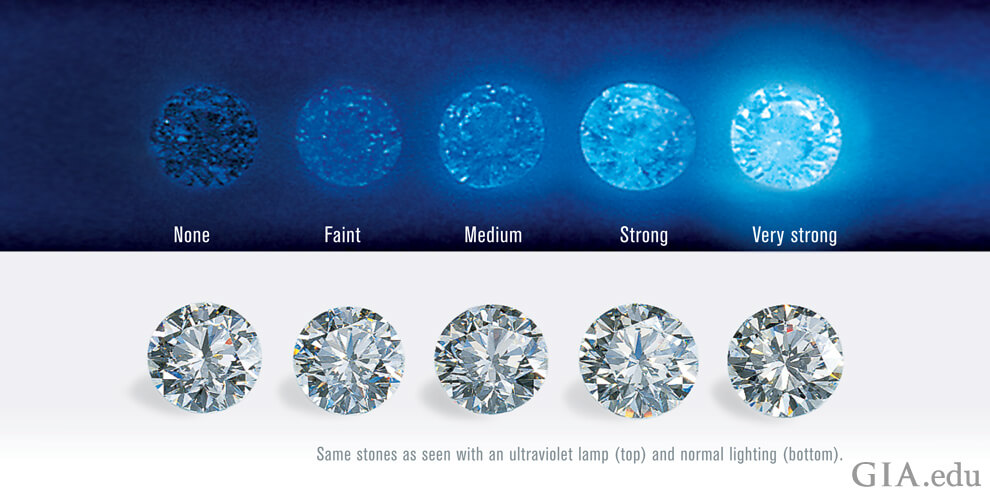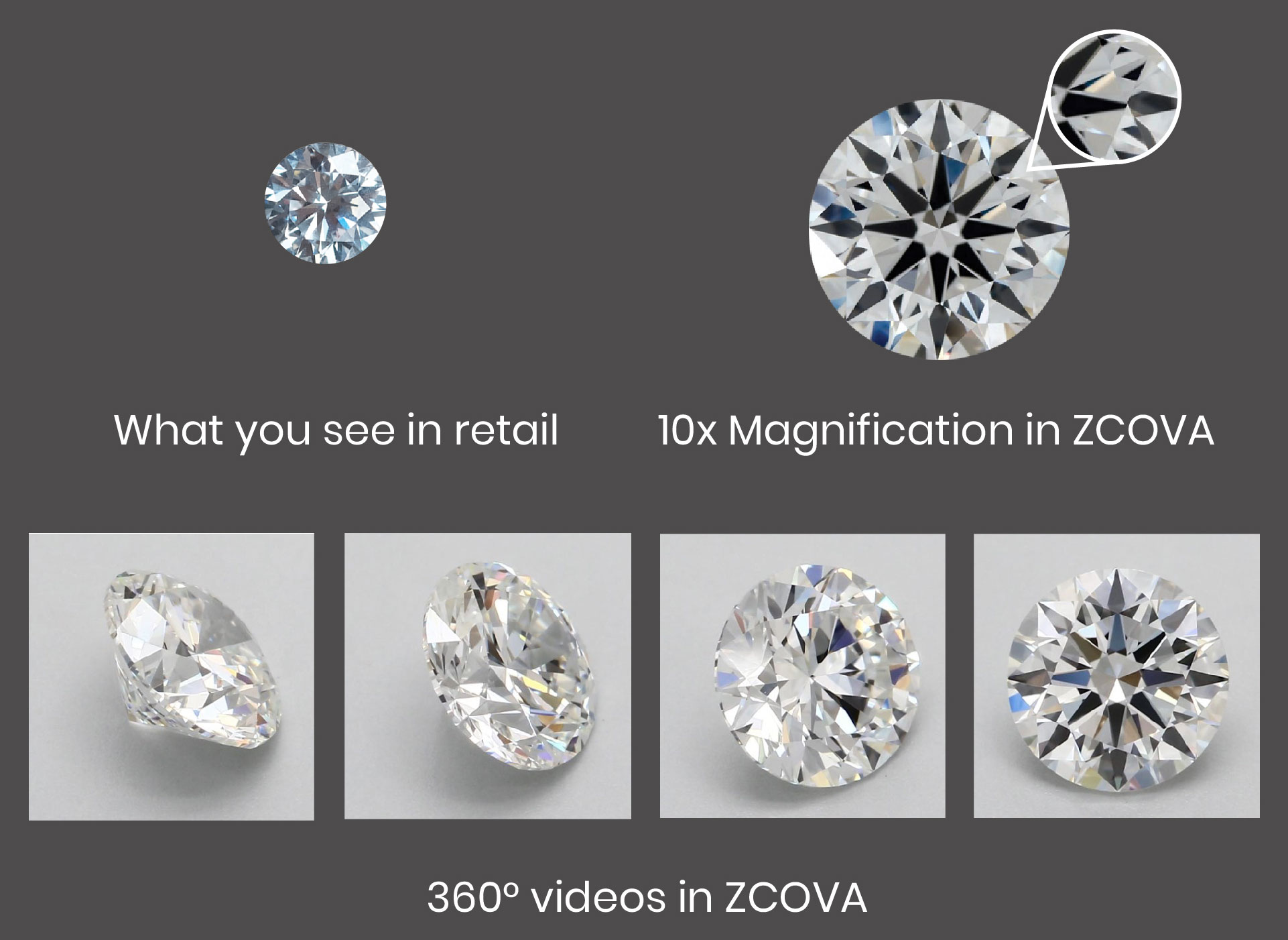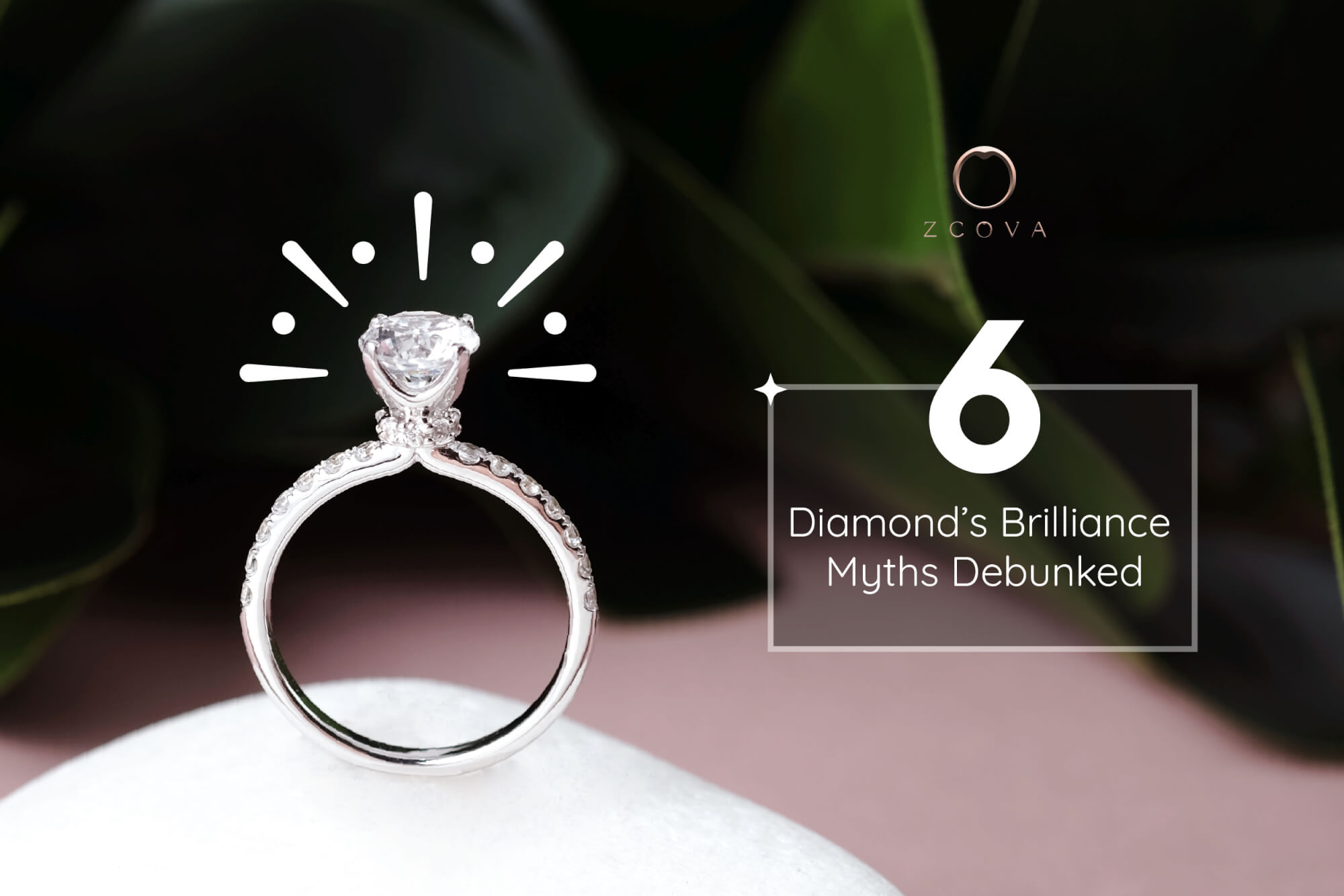
GIA Graduate Gemologist: Debunking Myths of Diamond’s Brilliance
When you’re on the journey looking for the perfect engagement ring to make her dream proposal come true, you want that diamond to sparkle too. Unfortunately, there are dull diamonds that don’t create the sparks of fire when the ring box pops open. Why?
Before you make your final decision on the diamond, here are some of the most common myths that our in-house GIA graduate gemologist is highlighting for you to further understand the brilliance of a diamond.
Myth #1: Any Diamond Will Sparkle
This is so not true. A diamond’s Cut affects how light penetrates the diamond where it creates sparkle. If a diamond is cut too deep or too shallow, the light will not reflect properly.

Professional workmanship is required to ensure a diamond’s proportions, symmetry, and polish are able to deliver the magnificent return of light. A diamond with a poor Cut will have little to no sparkle. At ZCOVA, we only provide Triple Excellent Cut (3EX) for customers to get the maximum sparkle.
Myth #2: The Bigger, The Better
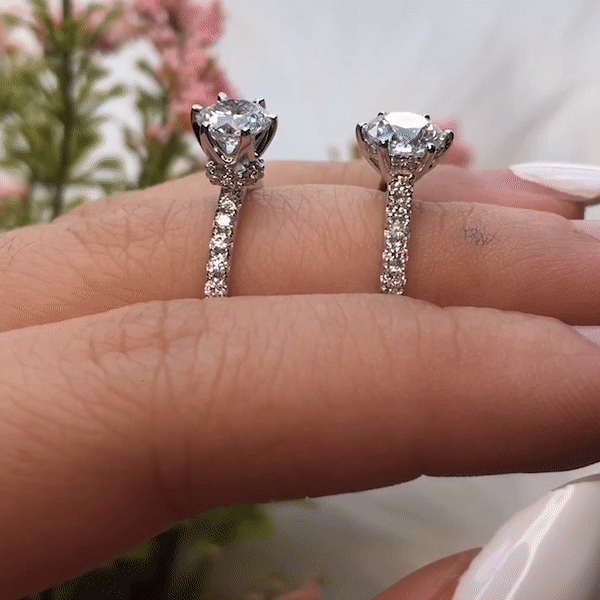
A large diamond definitely gives an overwhelming look on your delicate hand. However, a bigger diamond doesn’t shine any brighter than a smaller diamond. In fact, a diamond’s size doesn’t affect the brilliance and sparkle of the stone.
The Cut of a diamond is what really matters for a diamond’s sparkle. If a diamond is cut properly and free of flaws, the sparkle should be amazing.
If you really want to have a bigger diamond, we’d recommend getting a halo engagement ring. Not only can you save money on the centre stone, but it can also make your centre stone look up to one carat bigger with extra sparkle.
RELATED: How to Save for an Engagement Ring
Myth #3: Fluorescence Affects a Diamond’s Sparkle
A diamond’s fluorescence is only visible when the diamond is in contact with ultraviolet light. If a diamond has fluorescence, it will emit a blue or yellow glow. A diamond with fluorescence will not show under sunlight. Instead, it will show a blue shine on the diamond.
Based on our in-house GIA graduate gemologist, a diamond with fluorescence can be beneficial or detrimental to the diamond. Fluorescence in diamond is advantageous to a diamond with a colour range below J. Especially for a diamond with blue fluorescence, it will help to improve the colour appearance of the diamond where a K colour diamond may look like a J colour.
As for diamonds above G colour, it will be detrimental if the diamond has fluorescence. Due to the range above G colour is Colourless with fluorescence, it will downgrade the colour appearance of the diamond. If the diamond has a Strong – Very Strong fluorescence, it will then be detrimental to all ranges of colours. It may cause the diamond to look milky or oily due to its Strong fluorescence.
Therefore, every diamond in ZCOVA is carefully selected by our gemologist to ensure they meet our stringent requirements. If a customer requests for a diamond with Strong fluorescence, we will make sure they fully understand what they have selected for quality assurance.
Myth #4: Diamond Shapes Affect The Sparkle
Nope. As we mentioned above, the brilliance of a diamond is determined by the quality of the Cut. Each diamond has a unique facet pattern that gives the shapes its unique brilliance.
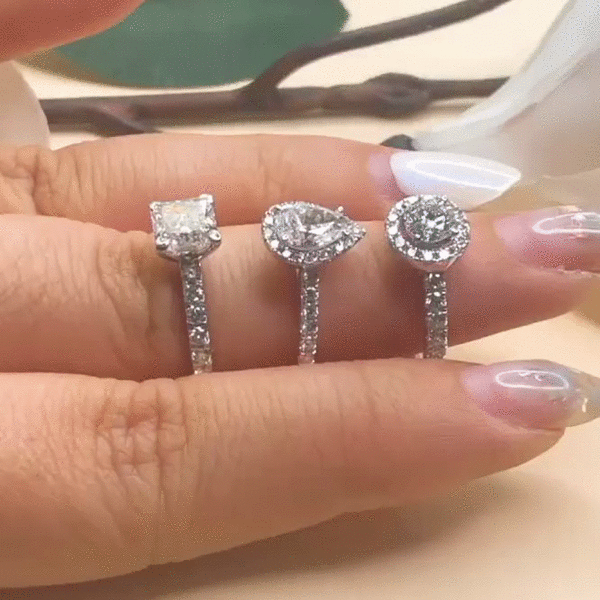
This means that even the Round diamond is the most brilliant, but that doesn’t mean that all Round diamonds will always shine bright. It still depends on how well cut the diamond is, in order to get that brilliance.
Myth #5: Ring Setting Doesn’t Matter
Surprise, surprise! As a matter of fact, the ring setting that you choose for your diamond can have a large effect on how much it sparkles. Classic solitaire settings with a raised centre crown will have an illusion of a bigger diamond.
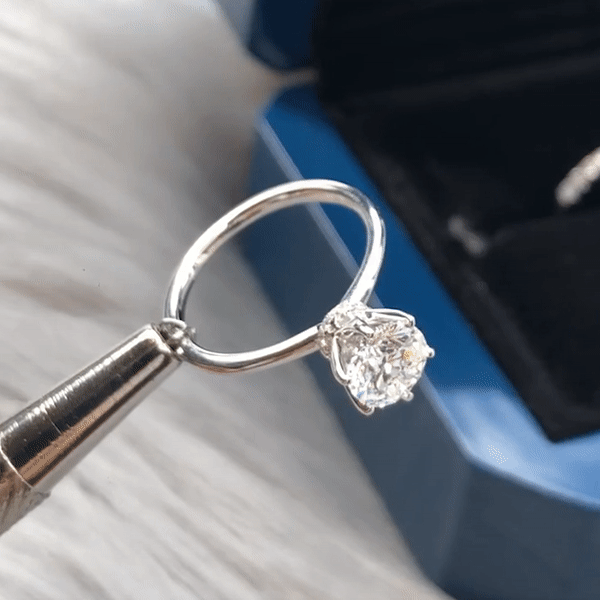
On the contrary, a bezel setting covers up the edges of the diamond, making it look much smaller than the diamond chosen size.
RELATED: Top Selling Diamond Ring at ZCOVA
Myth #6: Seeing The Physical Diamond Proves Everything
As of today, many people have adapted to the new way of purchasing diamonds, which is through online. There is no better way to judge a diamond’s light performance than to view it on 360-degree HD diamond images taken under controlled lighting on a specialised photography machine for diamonds. This will help you to spot any obvious cut problems immediately.
With different types of lighting at the retail store, examining a diamond can be inaccurate. But if the diamond comes with a GemEx Light Performance Certificate, things will be different. It measures the light a diamond returns based on Brilliance (White Light), Fire (Colour Light), and Scintillation (Sparkle).
RELATED: GemEx Diamond Light Performance Certification
So How Will You Get The Best Diamond’s Brilliance?
Now that you’re ready to find a diamond that sparkles as bright as your love, browse through our list of more than 150,000 diamonds graded by GIA and speak to our GIA graduate gemologist for assistance. Not only do our diamonds come with GIA certificates, they also come with GemEx Light Performance Certificate.
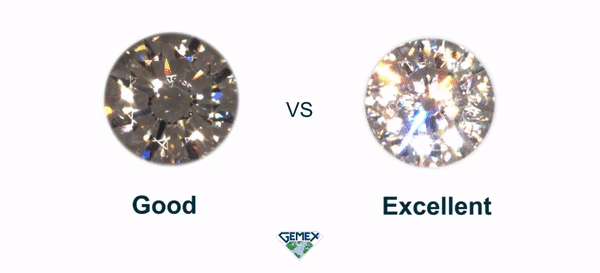
With these Dual Certificates, you’ll be guaranteed to get #CertifiedBrilliant diamonds from ZCOVA.
Which perception did you have before and what do you think of it now? Ask away if you have anything that you’d like to clarify, our jewellery experts would be more than happy to help.
